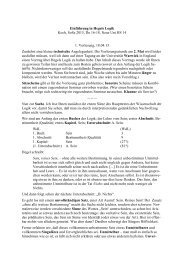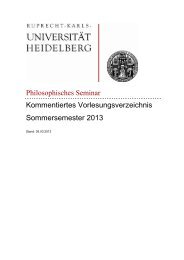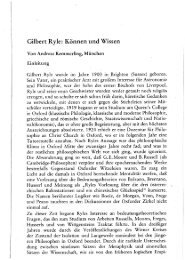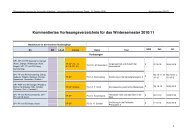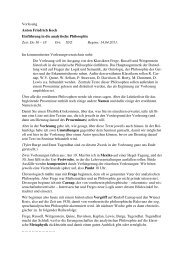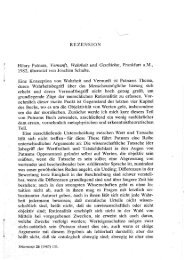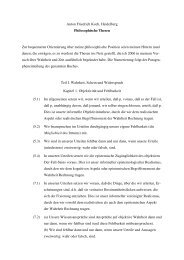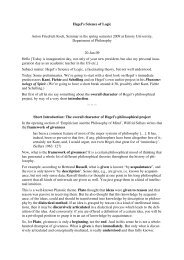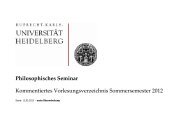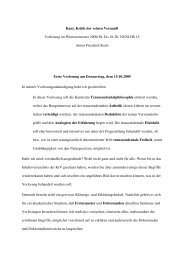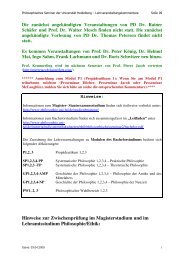KANT'S CRITIQUE OF TELEOLOGY IN BIOLOGICAL EXPLANATION
KANT'S CRITIQUE OF TELEOLOGY IN BIOLOGICAL EXPLANATION
KANT'S CRITIQUE OF TELEOLOGY IN BIOLOGICAL EXPLANATION
You also want an ePaper? Increase the reach of your titles
YUMPU automatically turns print PDFs into web optimized ePapers that Google loves.
144 Interpretations of the Antinomy<br />
utterances of Kant's in the Critique of Judgment can be interpreted<br />
in such a way that Kant seems to be abandoning his critical reservations<br />
about teleology. Löw explains the purported conversion by<br />
appealing to arguments found satisfying by the proponents of<br />
teleology in science but not accepted by mechanists – arguments<br />
that were certainly already familiar to Kant long before he began the<br />
Critique of Judgment. However, no argument is advanced that<br />
might plausibly be conceived to have convinced the "mechanistic"<br />
author of the Critique of Pure Reason to abandon his objections, and<br />
Kant himself of course gives no such argument. The interpretation<br />
of an "Aristotelian turn" in Kant is thus grounded on arguments<br />
whose power to convince presupposes such a turn. We would have to<br />
believe that Kant without much ado simply abandons one of the fundamental<br />
pillars of his system (the category of causality); that, while<br />
he was not willing to abandon causal determinism to save human<br />
freedom — as the Third Antinomy shows —, he does just this without<br />
any hesitation in order to explain organisms.<br />
It seems to me to be methodologically much more sensible to<br />
assume, with Ewing, that Kant distinguishes between mechanism<br />
in particular and causality in general. Furthermore, this third variety<br />
of interpretation has the same difficulties as the first. The<br />
maxims are still just as contradictory as before — however one<br />
interprets the phrase "according to mechanical laws," for it appears<br />
in both maxims. Almost all proponents of the third variety follow<br />
Ernst Cassirer in seeing the distinction between regulative and<br />
constitutive principles as itself the solution to the antinomy. 13<br />
13 A number of commentators have attempted to avoid the problems criticized<br />
here. In particular Marc-Wogau (214-245) sees that the confusion of regulative<br />
and constitutive principles cannot constitute the antinomy, but he clings to the<br />
identification of mechanism and causality. McFarland, too, agrees that the<br />
confusion-thesis is unsatisfactory, but he looks for a solution in the supersensible,<br />
as if we were dealing with an antinomy of reason rather than of judgment, and he<br />
seems to conflate mechanism with the science of mechanics. Finally,<br />
Philonenko's interpretation has much in common with mine — especially in the<br />
emphasis on the form of the antinomy. However, he fails to commit himself to a<br />
particular interpretation of the antinomy, i.e., whether R1 and R2 are incompatible<br />
or not. Furthermore, in spite of his emphasis on the formal aspects, he<br />
translates the phrase "nach bloß mechanischen Gesetzen möglich," which is<br />
repeated verbatim in all four propositions (R1, R2, C1, C2), differently each time so<br />
that the linguistic form of the contradiction is not conveyed.



